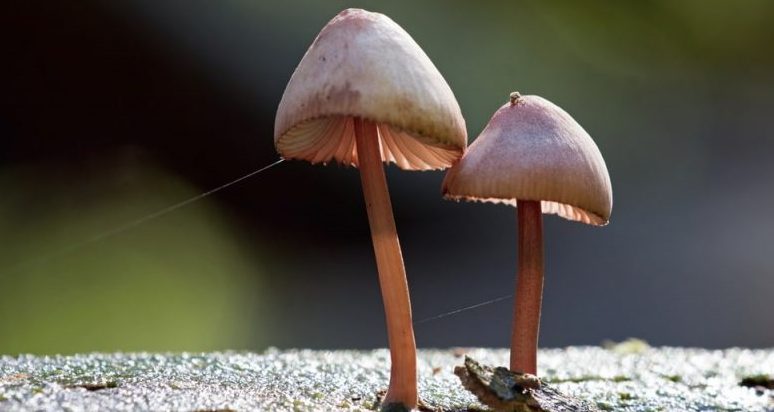Living beings are classified into five kingdoms to facilitate the study and understanding of the relationships that exist between them as well as the particular characteristics of each one.
This classification is made from more general groups to more specific groups, starting with the kingdoms, then the phyla or division, the class, the order, the family, the genus and the species.
In other words, each kingdom includes a huge variety of organisms that have some characteristics in common.
The kingdoms are:
- Animalia (animal Kingdom). Eukaryotic organisms, mobile, without chloroplast or cell wall. They are heterotrophs (they feed on other living things).
- Plantae (vegetal kingdom). Eukaryotic organisms, without the ability to move, with cellulose-containing cell walls, photosynthetic.
- Fungi (Mushrooms). Eukaryotic organisms, unable to move, with cell walls that contain chitin.
- Protista. Other eukaryotic organisms (with cells that include a differentiated nucleus) that are not included among plants, animals, and fungi.
- Monera. Prokaryotic organisms. In prokaryotic cells they do not have a differentiated nucleus, that is, the genetic material is not separated from the rest of the cell by a cell membrane, but is found free in the cytoplasm.
Characteristics of the Fungi Kingdom

- Eukaryotic organisms. They are made up of eukaryotic cells, that is, they have a nucleus where the genetic material is in the form of chromosomes.
- Cellular wall. Like plants, they have a cell wall on the outside of the plasma membrane. Unlike plants, this wall is made up of chitin and glucans.
- Humidity. They proliferate in humid and aquatic habitats.
- Heterotrophs. Unlike plants, they need to feed on organic matter made by other organisms, since they cannot photosynthesize. The characteristic that distinguishes them from other heterotrophs is that they perform an external digestion of their food: they secrete enzymes that digest the food and then absorb the molecules resulting from that digestion.
- Reproduction by spores. Spores are microscopic unicellular or multicellular bodies. They are dispersed in a latent state until favorable conditions are found for their germination. This reproduction can be sexual or asexual, depending on the species.
At our daily life, We can find mushrooms in the form of food (in a variety of dairy products, beer, or by themselves), or as part of medicinal compounds. There are also contaminating fungi, such as those that rot wood, and parasitic fungi that cause disease in the human body. In addition, in various cultures mushrooms are used for their hallucinogenic properties.
Examples of Fungi Kingdom
- Fly swatter (Amanita muscaria). Division: basidiomycetes. Order: Agaricales. Mushroom that temporarily paralyzes insects that come into contact with it. It measures between 10 and 20 centimeters. It is red with white dots. It is found in different habitats, but mainly forests, as it grows associated with the roots of various trees. It is a hallucinogenic mushroom.
- Amethyst Lacaria (laccaria amethystea). Division: basidiomycetes. Class: Homobasidiomycetes. Order: Tricholomatales. Mushroom that has a hat up to 5 cm in diameter. It has a striking violet color. It appears in mossy and humid areas of forests.
- Star mushroom (aseroë rubra). Division: basidiomycetes. Class: agaricomycetes. Order: Phallales. Mushroom recognizable by its unpleasant smell, which attracts flies, and by its starry shape. Its stem is white and its arms are red. It can reach 10 centimeters. Each of its arms (between 6 and 9) measures 33 millimeters.
- Devil’s cigar (chorioactis geaster). Division: ascomycetes. Class: pezizomycetes. Order. Pezizales. Star-shaped mushroom, tan in color. Its peculiarity is that it produces a sound when it opens to release its spores. They grow on dead cedar or oak roots. It is found only in the United States and Japan.
- Beer yeast (Saccharomyces cervisiae). Division: ascomycetes. Class: Hemiascomycetes. Order: Saccharomycetales. Unicellular fungus. A type of yeast used in the making of bread, beer, and wine. It reproduces asexually by budding. Under certain conditions it is capable of reproducing sexually.
- Penicillium Roqueforti. Division: ascomycotic. Class: eurotiomycetes. Order: Eurtiales. It is used in the manufacture of a wide variety of cheeses, including blue cheeses (Roqueforte, Cabrales, Valdeón, etc.)
- Pine mushroom (suillus luteus). Division: basidiomycetes. Class: homobasidiomycetes. Order: boletales. It can measure 10 cm in diameter. Dark brown in color and viscous surface. It is found in pine forests. It is an edible mushroom.
- Dermatophyte fungus (epidermophyton floccosum). Division: ascomycotic. Class: eurotiomycetes. Order: onygenales. Fungus that causes skin infections such as ringworm, athlete’s foot, and onychomycosis. It is spread by contact. It grows in colonies.
- Crepidotus. Division: Basidiomycetes. Order: Agaricales. Fan-shaped saprophytic fungi. Of colors between whitish and brown. It grows in temperate climates.
- Penicillium chrysogenum. Division: ascomycotic. Class: Eurothiomycetes. Order: eurotiales. It is the fungus that produces penicillin (an antibiotic that made it possible to treat diseases that were considered incurable).
How do fungi feed?
- Saprophytes. They consume remains of decomposing organisms.
- Parasites. They consume the organic matter of living things with which they live.
- Symbiotes. They are associated with plants achieving benefit for both.
Classification in the fungi kingdom
The Fungi kingdom is subdivided as follows:
- Basidiomycetes (Basidiomycota division). Mushrooms that produce basidia (spore-producing structure) with basidiospores (reproductive spores).
- Ascomycetes (Ascomycota division). Mushrooms and molds that produce asci (spore-producing sex cell) with ascospores (each ascus produces 8 ascospores).
- Glomeromycetes (Glomeromycota division). Mycorrhizae, that is, a fungus with a symbiotic relationship with the roots of a plant.
- Zygomycetes (Zygomycota division). Zygospore-forming molds (sexual part of the fungus)
- Chitridiomycetes (Chytridiomycota division). Microscopic fungi with zoospores and uniflagellate gametes.
